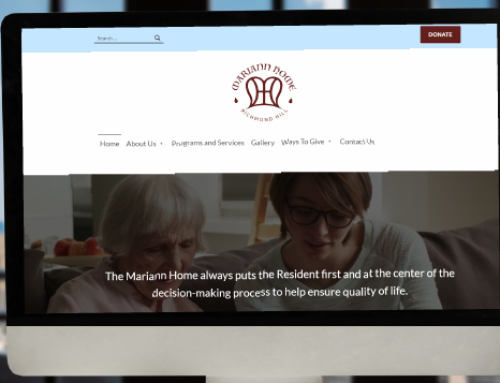Over 46% of people say that the design of an organization’s website is the number one principle in determining credibility. With nearly half of the public looking at your website to judge if you’re legitimate, it’s important to make a good first impression. With both technology and users’ preferences changing constantly, that’s not always the easiest thing to do. Here are the top 5 web design trends for websites designed today:
Striking Images
As monitors get larger and internet speeds get faster, many sites have begun to take advantage of large, high definition images. A popular trend is to use these photos as the backdrop of their home page or splash page.
This trend plays right into the hands of many non-profit organizations and small businesses. Shocking images are a great tool that many organizations use at fundraising events and on advertising on social media. If the first thing that viewers see on your website is a striking image paired with a call to action or mission statement, that message is likely to stick with them for the rest of their time on your site, and possibly even after they’ve left.
Mobile Friendly
Responsive web design has become incredibly popular in recent years thanks to the rise of mobile internet usage. With the ever-growing increase in mobile phone use, it’s no wonder many people are changing their website design’s priority to become more and more mobile friendly. This means that when someone clicks into your website via their mobile, your website will automatically adjust to the size of the screen for easy navigation and use by the phone user.
Full-Screen Forms
Another effective trend involves putting online forms on pop-up screens instead of their own page. Whether it’s a form for donations, joining a mailing list or volunteering, putting the form on a single page has several advantages. This can make the forms more legible and easy to interact with. It also removes clutter, allowing the user to focus on the task at hand.
If you aren’t utilizing your website to collect potential volunteers’ information or donations, it’s time to start. If you already are, play around with the way these forms are presented. It could be the difference between a new volunteer or donor and somebody leaving a form incomplete.
Videos
Faster loading speeds have made utilizing video easier than ever. Some sites will use them to complement other content, while others have opted to use videos as backgrounds. This can create a unique and professional website, but it could also come off as distracting. Finding a middle ground is vital.
This is sort of like the “next step” of the HD photo trend. If it’s done right, using video can have the same, if not stronger, effect on viewers. Test out a couple of different ways to integrate video to see what works the best for you.
Infographics
Well-designed infographics can convey important data that might be missed otherwise. According to 3M Corporation, 90 percent of information transmitted to the brain is visual, and the brain processes visuals 60,000 times faster than text. Still not convinced? Publishers using infographics see their traffic grow 12 percent more than those that don’t.
In the non-profit and small business sector where statistics are a great way to raise awareness, infographics should be used often. Don’t stop at your website; use them for social media, marketing materials, events and anywhere else you think they could be beneficial.
Websites are more important now than they ever have been, and they’ll only continue to grow. The Internet is the go-to resource for most people, whether they want to get involved or just learn more. Keeping your website looking good and up-to-date can make a huge difference in involvement and awareness related to your cause.
Feel free to Contact Us for more information.










